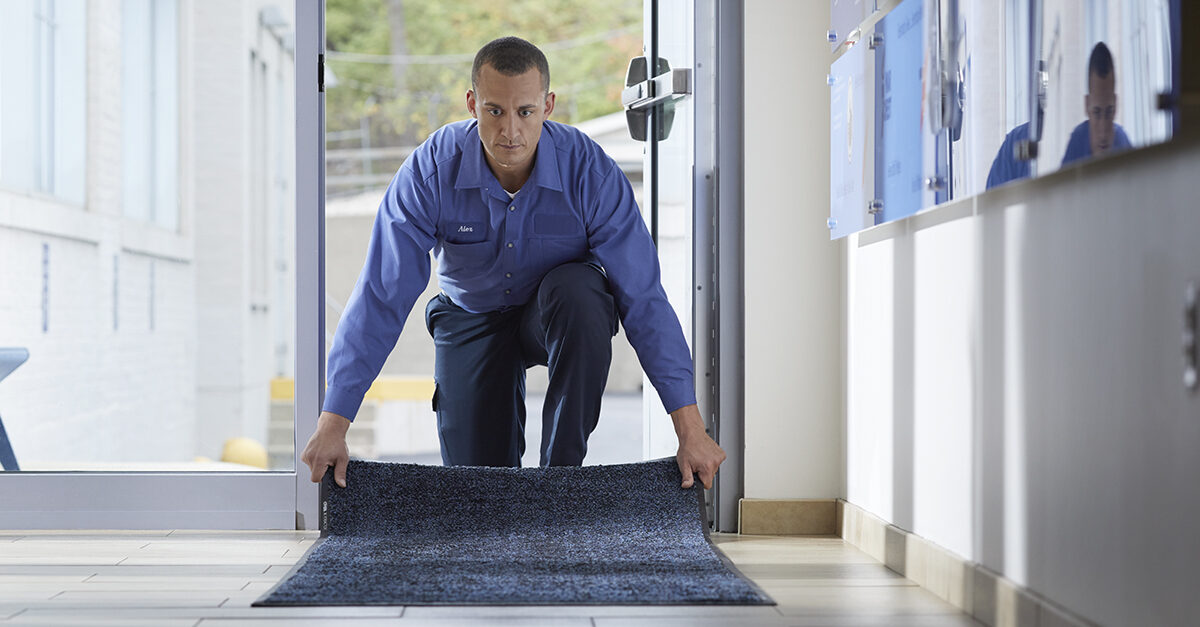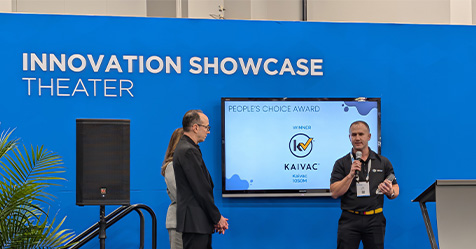How do facility mangers protect floors, one of a business’s most expensive assets? By placing floor mats throughout a building. Mats also help keep your facility clean, provide comfort and support, and promote a positive brand image. However, not all facility mats are created equal.
When choosing a mat, it’s crucial to think about the function and size of the mat as its purpose and placement will vary depending on the facility. It is also essential to consider the requirements of your facility. For example, a restaurant or manufacturing facility will have different needs than a school, based on factors like foot traffic and soil types coming in on shoes. Selecting the right mat, along with having a robust maintenance program, is essential for facility floor maintenance.
Floor mats 101
Mats constructed from durable material will withstand foot traffic and provide various benefits. Businesses should consider a mat’s composition, depending on facility needs. For example, a standard carpet mat uses nylon or polyester fibers to capture liquid, dirt, and debris. High-performance mats are designed with better quality fibers that offer either stain resistance or superior absorption. Similarly, some of the highest performing mats contain a blend of fibers, such a microfiber, for both stain resistance and absorption. Fast-drying, multiple-sized fibers allow moisture to evaporate more quickly and work together to repel fine particles. Anti-fatigue mats, commonly made from rubber, foam, or vinyl, provide comfort for feet, legs, and backs. Scraper mats protect against dirt and debris brought in from the outside.
Another critical aspect to note is mat size. Small mats may not give businesses the necessary coverage or handle heavy foot traffic. Mats that are too large may be difficult to roll, lift, or move, making them harder to maintain. Discussing options with matting vendors or rental providers can help businesses find the best-fitting mat for their facility.
Location, location, location
Knowing where to place mats is essential to keeping your facility clean and well-maintained. According to ISSA, appropriately placed and maintained mats will keep 85% less dirt from entering a building and preserve a floor’s finish. Without adequate matting, 42% of a floor’s finish can be removed within the first six feet of an entrance after only 1,500 people have walked in.
Ideal areas to place a mat include:
Outside entryways: Shoes can disperse debris—from snow and salt to mud, gravel, and sand—throughout facilities. Using rubber scraper mats at the front of entryways provides guests with an area to scrape their shoes before entering. It can help reduce the chance of tracking contaminants into the facility, protecting valuable flooring assets.
Entrances/lobbies: Placing a mat in entrances and lobbies provides another layer of defense in keeping dirt and debris out of facilities. With first impressions starting at the front door, it’s important to build a positive brand image that people notice as soon as they enter your facility. Consider customized logo mats that display your business or school pride while capturing dirt and debris.
High-traffic walkways: Areas like school hallways, airport terminals, and elevator banks experience high levels of foot traffic, rolling wheels, and heavy loads. High-traffic mats, which are usually made with heavier rubber backing, are commonly used in these areas. The heavier rubber backing helps reduce movement from wheelchairs, carts, or a higher level of general foot traffic.
Hostess stations, service counters, and industrial workspaces: Long hours of standing can result in sore feet, legs, knees, and hips. The U.S. Occupational Health and Safety Administration (OHSA) estimates the annual cost of fatigue and health-related productivity loss at US $136.4 billion. Anti-fatigue mats placed in hostess stations, reception and registration areas, and checkout and customer service counters in banks, theme parks, and movie theaters can help relieve this fatigue. They are also useful around workstations in manufacturing or industrial environments. However, pay close attention to where manufacturing or industrial environment anti-fatigue mats are placed. While their polyurethane coating creates a stain-resistant, easy-to-clean surface, they cannot withstand high heat in environments with activities such as welding.
Restrooms: Businesses can improve their image and enhance the restroom experience by installing restroom mats. Mats help eliminate puddles around urinals and sinks, protect floors from drips and spills, and control odors.
Floor mat maintenance
Mats are essential year-round. Proper mat maintenance is critical to ensure long-lasting effectiveness. Ignoring care affects their lifespan, which lessens their ability to trap dirt, limit odors, and provide comfort. Routinely cleaning and vacuuming them is essential. In addition to vacuuming, take mats outside regularly to shake off excess dirt and dust.
Another option is partnering with a qualified service provider so your facility always has clean, high-quality mats. Service providers professionally launder the mats regularly to prevent an “ink pad” effect, with many offering freshly cleaned replacement mats to replace the dirty ones.
Maintaining mats can keep dirt and debris out of facilities and help capture germs. From improving brand image to protecting floors and providing comfort to employees and guests, placing well-made and appropriately sized mats in critical areas can help keep your facility clean and enhance your brand’s reputation.




